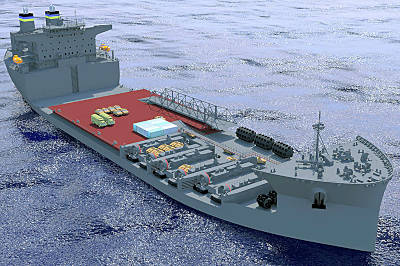ABERDEEN PROVING GROUND, Md., March 10, 2011 — What started as a super-secret program to protect ground troops in Iraq from roadside bombs has matured into a coveted asset in Afghanistan, where it provides a persistent surveillance capability against enemy threats, an official who provided materiel support for the program reported.
Task Force ODIN was established in 2006 to help in countering the improvised explosive devices that were taking a huge toll on U.S. forces in Iraq. ODIN, also the name of a Norse god of war, is an acronym describing the task force’s counter-IED mission: observe, detect, identify and neutralize.
Officials recognized early on that simply identifying and defusing IEDs was only part of the solution, Richard Wittstruck, chief engineer for the Army’s Program Executive Office for Intelligence, Electronic Warfare and Sensors here, told American Forces Press Service.
“We can never forget that the device itself is not the threat,” he said. “It’s the tool used by the threat. So we have to address the tool. But if we don’t also address the threat, then they just come up with a different tool.”
So ODIN focused on the human network behind the IED threat, from the people who design and deliver them to the ones who cache them and give the detonation orders.
“You want to get as far left of the boom as you can,” Wittstruck said. “You want to get past the emplacement cycle back into the transit cycle, back into the connection cycle, all the way back to the planning cycle, if you can. And then you want to cut it off there so that they don’t get the rest of those steps in place. And Task Force ODIN provides that capability.”
Wittstruck and his team, along with their colleagues at Army Material Command, were responsible for designing, developing, producing, fielding and sustaining the elements of Task Force ODIN. They include a family of manned and unmanned aerial platforms, their sensors, the communications data links used to transmit the information they collect and the ground-station operations where analysts turn that information into intelligence.
The system proved highly successful after being activated in Iraq in 2007. Two years later, Task Force ODIN brought this new capability to Afghanistan to shore up gaps in the intelligence, surveillance and reconnaissance assets supporting ground troops there.
Army Maj. John Baynard was commander of Bravo Company, 3rd Battalion, 214th Aviation Regiment’s flight company during that first rotation in Afghanistan.
Flying King Air 300 medium-altitude reconnaissance system aircraft over sweeping areas of Regional Command East and Regional Command South, his soldiers provided valuable communications and signals intelligence as well as full-motion video of areas of interest. Meanwhile, various unmanned aerial vehicle platforms augmented their efforts.
“Utilizing our high technology, Task Force ODIN coordinated with ground forces to neutralize numerous high-value targets,” Baynard said in a PEO-IEW&S video. “Targets ranged from financiers of insurgent activities to kidnappers, money launderers and guys who performed indirect-fire operations on coalition bases.”
In addition to taking high-value targets off the battlefield, Baynard said, his company also provided ground forces early warning of enemy activity in their operating areas. It’s “an essential capability for coalition forces against an adaptable enemy,” he said.
Since its first deployment, ODIN has matured to the point that it now provides persistent surveillance over vast geographic areas. “They are surveilling across wide areas of real estate, looking for indications of insurgent activity, and then informing a commander in a near-real-time operation of what the threat and situation is so he can be more effective in his maneuvers,” Wittstruck said.
ODIN’s overwatch capability makes it possible to tip off maneuver commanders about anything from movement along a specific goat trail to unusual activities that might indicate enemy operations under way or being planned, Wittstruck said.
For example, a local marketplace typically is packed at about 3 every afternoon as families shop for their dinners. What does it mean when, for some unexplainable reason, it’s empty one afternoon?
“That’s an indicator that maybe somebody on the ground wants to be notified so they can go seek out and find what it is the locals know that we don’t know about that marketplace today, or what is about to happen at that marketplace,” Wittstruck said.
One of Task Force ODIN’s biggest triumphs, he said, is the “true sensor-to-shooter connectivity” it provides as it delivers actionable intelligence to ground forces and warns them of unknown threats. ODIN provides that connectivity, he said, saving lives and improving troops’ combat effectiveness.
Wittstruck said he’s particularly proud of the speed with which Defense Department officials fast-tracked funding and development processes and introduced the force structure changes and training needed to deliver Task Force ODIN to the combat theater.
“This shows that as a country and as a coalition, we can be agile in a time of war to respond to a threat,” he said. “Task Force ODIN is a testament to that.”
Source:
U.S. Department of Defense
Office of the Assistant Secretary of Defense (Public Affairs)

 von
von 